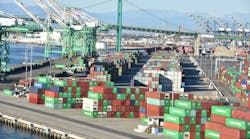According to FM Global, a commercial property insurer, these are six facets of the current supply chain crisis that exemplify threats to business resilience:
1. COVID-19 – The pandemic has disrupted demand (as consumers have hunkered down) and product supply (as factories have suspended production), setting up a bullwhip effect of supply and demand mismatches.
Takeaway: Although the pandemic triggered supply chain problems, other contributors are the proliferation of chip-based products and intensification of demand, which aren’t going away.
2. Cyber risk – A May cyber-attack on the Colonial Pipeline disrupted U.S. fuel supply for less than a week but revealed the soft underbelly of modern supply chains – that is, tight integration with digital systems that will intensify with the arrival of 5G broadband cellular networks.
Takeaway: Cybercrime has become big business and a geopolitical flashpoint, making cybersecurity an integral part of business strategy. Cyber security requires vigilance, intelligence, employee training, advanced technology and international diplomacy.
3. Port backlog – Goldman Sachs has estimated that US$24 billion of goods have been lingering outside of California ports alone as ocean-shipped goods have accumulated faster than workers can move them along.
Takeaway: Unfortunately, there are no assurances that backlogs and elevated shipping costs won’t linger through the middle of next year or longer.
4. Truck driver shortage – Many countries of the world lack enough truck drivers to move the goods that are backlogged in ports and elsewhere. At last reckoning, 20% of Eurasia’s road transport driving jobs were unfilled, according to the International Road Transport Union, and an estimated 80,000 truck driving jobs were unfilled in the U.S., according to the American Trucking Associations.
Takeaway: This shortage will strengthen the case for autonomous-vehicle development and for lowering the interstate truck-driving age.
5. Deadly floods – Deluges in China and Europe have destroyed communities, severed railway links, and disrupted manufacturing.
Takeaway: Although no single weather event can be conclusively attributed to a changing climate, flooding is a well-documented effect of warming temperatures and a growing risk to business.
6. Chip shortage – The pandemic closed factories and triggered a surge in technology demand, tension that was exacerbated by severe weather, shipping backlogs, and stockpiling. The shortage has affected auto, gaming, smartphone, and medical device manufacturing, among many other industries, and is expected to extend as far as 2023 or beyond.
Takeaway: This shortage looks familiar. Chip booms and busts have been common throughout the technology’s history and are likely to recur in the future.
“These and other factors contribute to the global supply chain strain, and each business should evaluate the potential implications on their company,” said FM Global’s Doug Backes, vice president and manager, staff claims.



